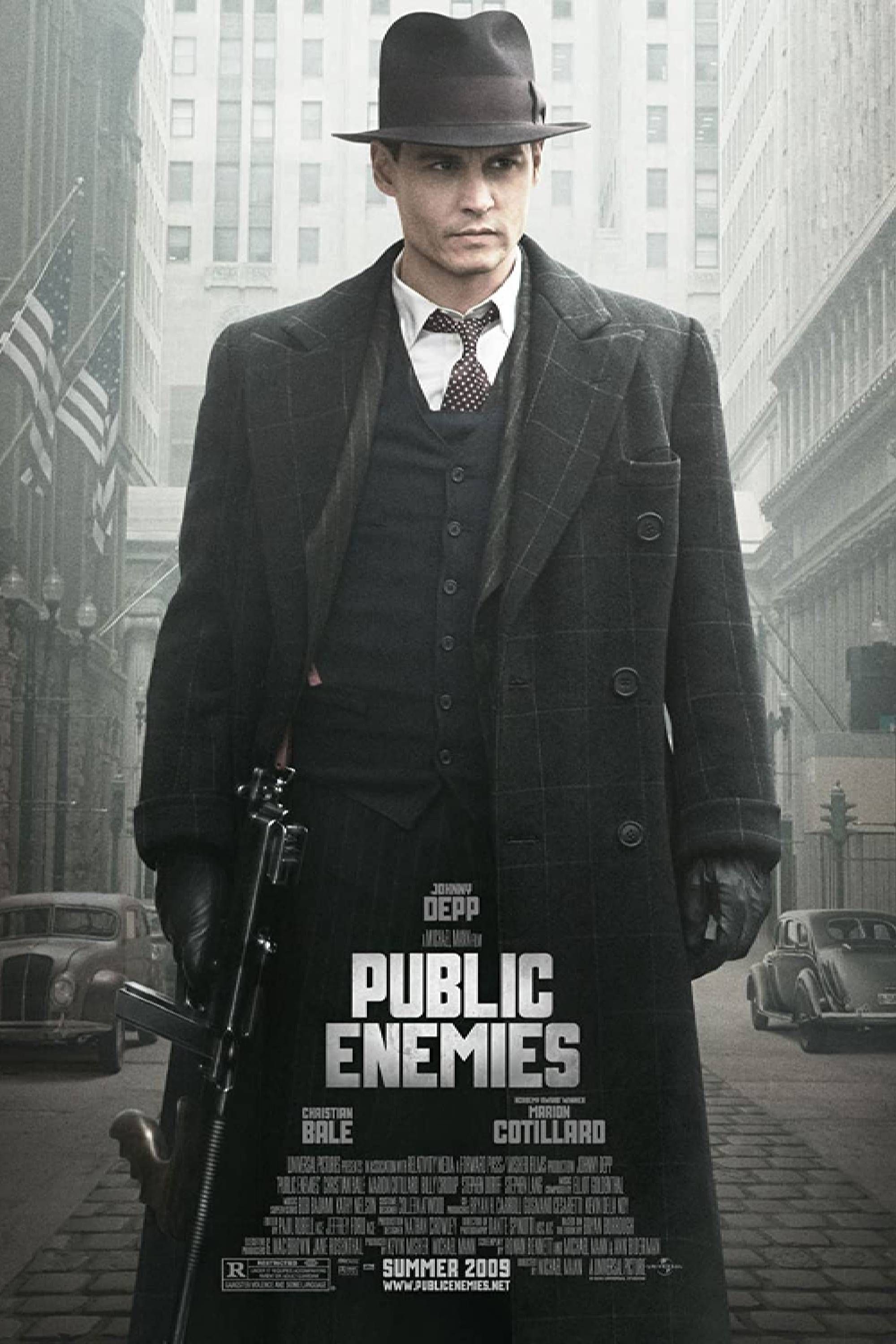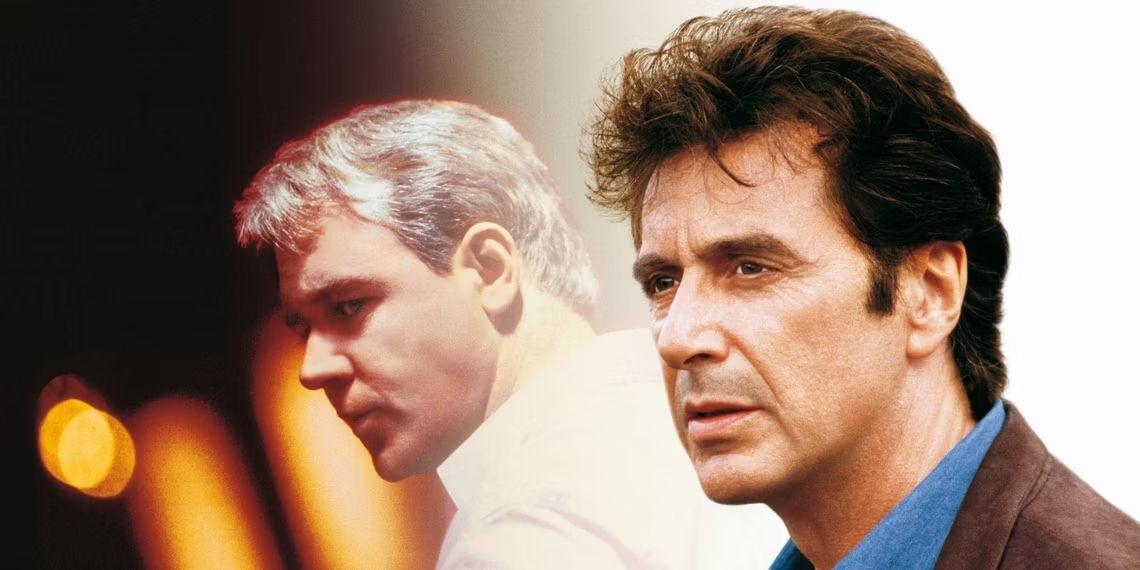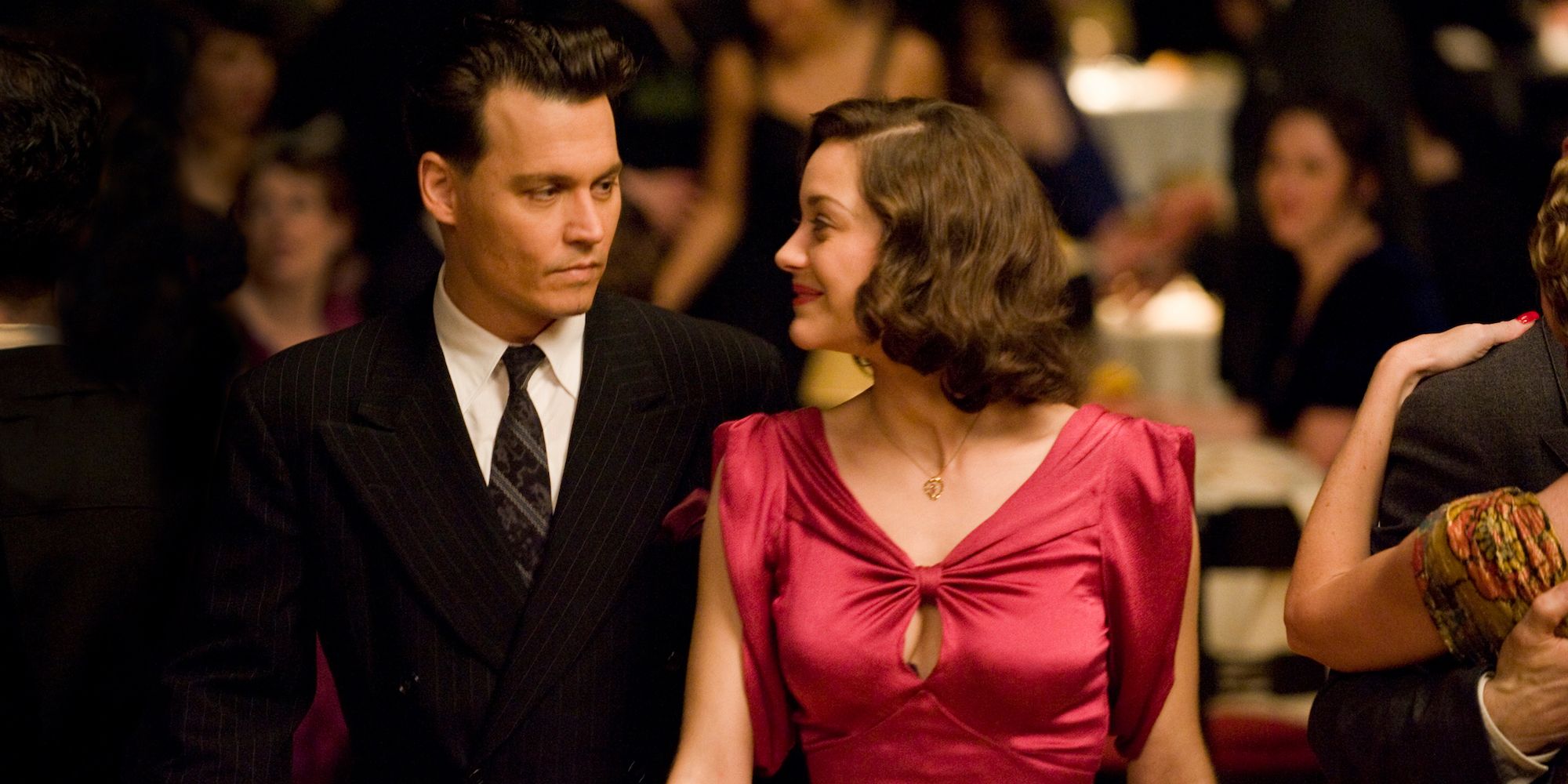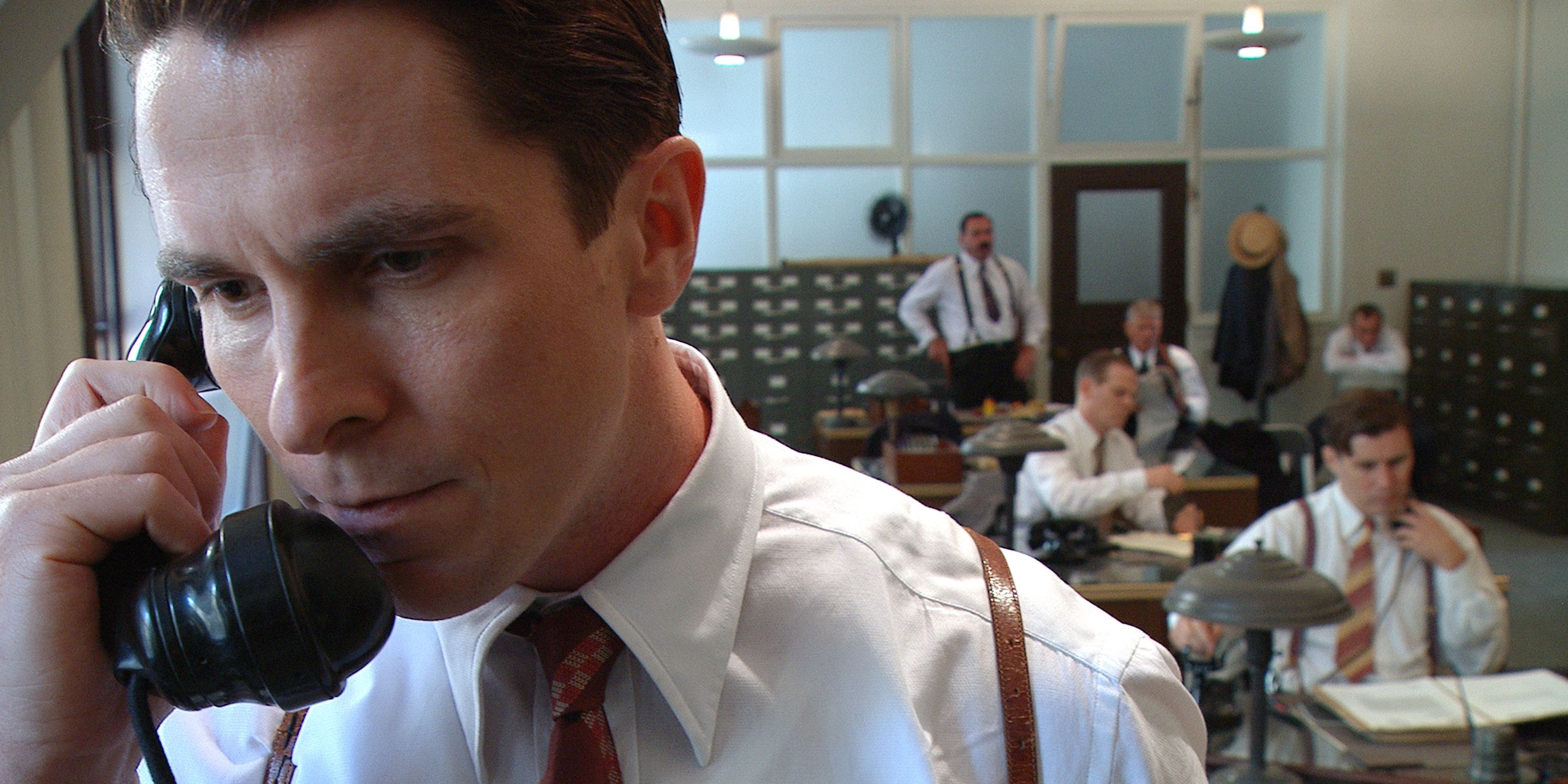The Big Picture
- Gangster cinema originates from real-life criminals turned celebrities, influencing films past and present.
- Michael Mann's Public Enemies modernized the old-school gangster movie, exploring complex themes and characters.
- Film techniques in Public Enemies reflect history, as new technology put criminals like Dillinger out of business.
Gangster cinema is one of the most storied and celebrated genres. From bank robbers to mobsters and everything in between, audiences have had a thirst for cops and robbers since the earliest days of cinema. In the 1920s and 1930s, bank robberies increased sharply and resulted in an extensive FBI manhunt for infamous criminals such as John Dillinger. Dillinger, and many of his associates, became celebrities of their own through the public nature of their crimes and the nationwide chases that would ensue. This led to a rise in crime movies covering similar events in the 1930s and into the '40s, an era now considered a golden age for crime cinema.
In the more recent past, filmmakers like Martin Scorsese and Michael Mann have continued building upon the legacy of crime cinema with films like GoodFellas and Heat. But, in 2009, Mann revisited that classic era with Public Enemies, a movie that charted John Dillinger's final years as the FBI closed in on his criminal enterprise. Johnny Depp portrays Dillinger, while Christian Bale plays Melvin Purvis, the lawman tasked with hunting him down. With great lead performances, and a solid supporting cast including Marion Cotillard, Stephen Lang, and Jason Clarke, Public Enemies has a sprawling cast dedicated to bringing this era to life. Public Enemies was met with positive reception and is one of Mann's biggest hits at the box office. But like many of his works, it is a movie that is growing in reputation as time goes on.
Mann is a director who is consistently ahead of the curve, so it is interesting to see how he takes a modernistic approach to a movie within the crime genre that takes place so long ago. With Public Enemies, Mann paid homage to the archetypes, themes, settings, props, etc. that frequently appeared in old-school gangster films. However, Mann's approach to capturing the era in a modern filmmaking fashion brings the 1930s alive in high-definition, unlike any way you've seen it before.

Public Enemies
- Release Date
- July 1, 2009
- Director
- Michael Mann
- Cast
- James Russo , David Wenham , Christian Stolte , Jason Clarke , Johnny Depp , John Judd
- Runtime
- 143 minutes
- Main Genre
- Biography
- Writers
- Ronan Bennett , Michael Mann , Ann Biderman , Bryan Burrough
- Tagline
- I hit any bank I want, anytime. They got to be at every bank, all the time.
John Dillinger Inspired Several Crime Movies Before 'Public Enemies'
During the period of American history when bank robberies were most prevalent, many criminals were elevated to celebrity status through their notoriety. Dillinger was certainly one of the most well-known criminals at the time. With snappy nicknames and larger-than-life personalities, people like "Pretty Boy" Floyd (portrayed by Channing Tatum in Public Enemies) and "Baby Face" Nelson (played by Stephen Graham), became recognizable figures in the media.
The movies at the time began to reflect the lives of these men. In 1932, Howard Hawks made the original Scarface, which was famously remade by Brian De Palma with Al Pacino in 1983. The 1932 film was partially inspired by the life of Al Capone, one of the most notorious gangsters, and one who also had many associations with crime in Chicago, where Dillinger spent his final days. Scarface, and many crime films of the era, were stark morality tales. These are movies designed to thrill while also making it clear how little a life of crime paid out in anything other than suffering and tragedy. Even more closely related to Public Enemies, a popular one from 1945 covered the same subject: Dillinger, starring Laurence Tierney, and a film which almost shares the same name: The Public Enemy, starring James Cagney in 1931.
'Public Enemies' Is More Morally Complex Than Past Movies Were Allowed to Be
The Dillinger overlap is obvious, but The Public Enemy also focuses on a criminal's rise through the ranks of the Chicago criminal world and his tragic comeuppance. These movies all share similar themes and character archetypes: There is usually a slick, charming criminal who experiences a meteoric rise followed by a fall from grace, and a no-nonsense lawman on their tail. Paranoia and distrust of other criminals are often present. The 1930s films largely dispel the notion that there is honor among thieves. While real-life criminals like Dillinger took on celebrity status in culture, the pictures of the time shied away from this with flat depictions of hero and villain that made it explicitly clear whose side you were supposed to be on.

Michael Mann Turned a ‘60 Minutes’ Story into a Masterful Thriller
Michael Mann's best non-crime movie stars Al Pacino and Russell Crowe.Mann's film is more thematically complicated than the movies of the 1930s were allowed to be, especially after 1936 when the Hays Code went into effect. This set of guidelines flattened out nearly any moral gray areas that could be considered in these films, instead demanding easy and simple stories with clear-cut lines of good and evil that would not lead their audiences into iniquity. Making a 1930s gangster movie in the 21st century grants a filmmaker more leeway to explore rich, complicated characters, and more mature themes. Mann took that opportunity to heart with Public Enemies.
With 'Public Enemies,' Michael Mann Modernized the Old-School Gangster Movie
Public Enemies is about looking back on this "Golden Age" and taking it for what it was: a dark time in American history that saw the majority of its most famous subjects either gunned down or imprisoned, and their methods of crime made obsolete. Mann completely strips the film of the glamor that we associate with the era. The criminals wear fine suits and are quite charming, but there is an empty, sad quality that goes deeper than simply being "good" or "bad." Just as The Sopranos functions as a bleak, depressing examination of our revisionist associations with the glamour and excess of mafia culture, Public Enemies gives us a more whole, compelling image of Dillinger that humanizes him while also shedding the iconography that comes with the life of a famous career-criminal.
The older films depicting this era were always quick to offer easy, clean moral lessons about crime, law, and order. Mann's film is more complicated. Dillinger is certainly not depicted as a person without blemishes, but his reputation exists in this liminal space between a violent criminal and a twisted kind of folk hero. The anti-hero quality of Dillinger's characterization reflects a more modern approach to crime storytelling, one that is present in many more recent crime films like The Town. Of course, this is nothing new to Mann, who started his feature film career with Thief. That movie is framed entirely through the eyes of a character who would have been explicitly labeled as evil in a 1930s film about the same subject. Still, you find yourself rooting for James Caan in Thief. Similar to Public Enemies, there's something undeniably thrilling about rooting for the robbers.
'Public Enemies' Features Mann's Signature Theme of Technology
As much as Mann thematically toys with history's relationship to 1930s crime, the film's visual style also reflects a more thorough examination of the subject. Public Enemies continues a trend Mann began with The Insider, opting for docu-style camerawork that really plants the viewer in the setting alongside the characters. This film also followed through on a creative streak he began with Ali by filming with digital cameras. The upgrade in technology between Miami Vice's hazy, grainy footage and Public Enemies reveals a much sharper, cleaner image. It is uncanny and strange to see the period settings, costumes, and props in this hyperrealistic lens. We are accustomed to seeing this time depicted in grainy black and white, but the high-defintion, smooth photography of Public Enemies reveals a completely new perspective.
Mann's increasing obsession with technology bleeds through the story of the film as well, as we are seeing Dillinger's criminal ways rendered obsolete by new, more efficient means of theft and technologically advanced surveillance to combat such crimes. Both sides of the law are leaving guys like Dillinger behind. Public Enemies feels like a closing of the book on this era, revisiting the golden age to reveal that it was maybe nothing more than the death throes of an older class of criminals. It is no wonder Mann followed up Public Enemies with Blackhat, a movie that strictly focuses on crime that takes place entirely within cyberspace.
Public Enemies is a rich, demystifying portrait of a legendary figure. The film sits strongly both alongside and in contrast to many of the great crime movies of the 1930s and 1940s. Mann deconstructs the era from the inside out, nailing the details and giving us an exhilarating action experience packed with dynamic hold-ups, shoot-outs, and getaways. While Public Enemies has tough competition with Mann's most acclaimed masterworks, it is a slick, stylish movie that deserves far more attention than it gets.
Public Enemies is available to stream on Netflix in the U.S.


